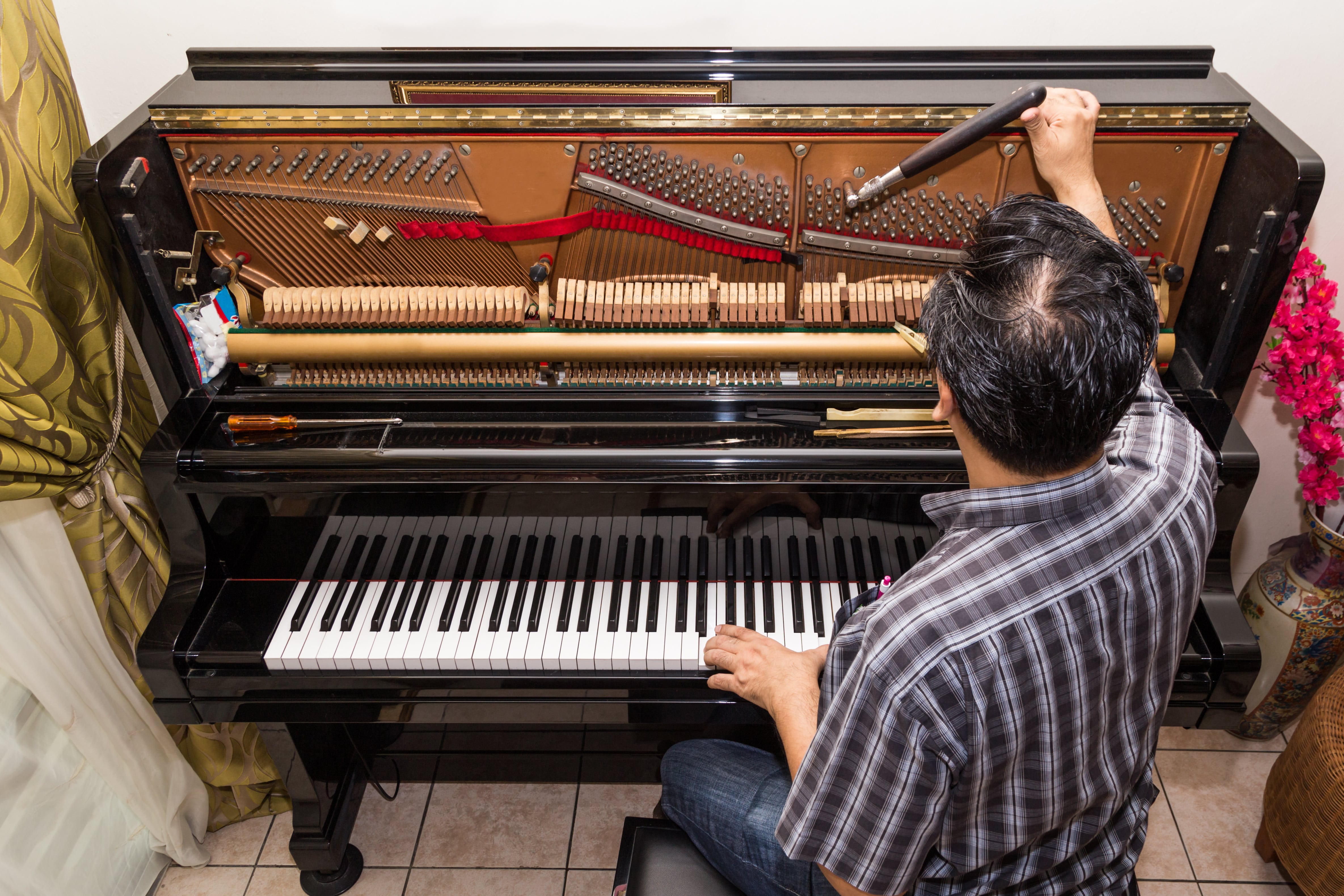A stable piano can withstand being moved from one spot to another, even one home to another, without needing to be tuned immediately. If a piano becomes noticeably out of tune being moved a short distance, it is a good idea to have it inspected by a qualified piano technician.

There are three reasons a stable piano will go out of tune:

Strings stretch. Throughout the life of the piano its strings actually stretch out, like a rubber band. The older the strings, the more uniform but less flexible they become. This is why new pianos require more tunings early on and why you should never buy a piano “new out of the box.” Experts recommend a minimum of four tunings the first year and twice a year thereafter. Most of a new pianos initial tunings should be done by the dealer before the piano is in your home. Tuning a piano less often will not damage it; it will only delay the time until the piano settles in.

Soundboards move. All spruce soundboards have cellular matter between the grains. These areas act like a sponge, swelling when they take on humidity in the summer, shrinking in our dry homes in the winter and changing the piano’s overall string tension. These changes may cause the tuning pins to slip or the string to move along the bridge pins. These changes will make the entire piano sound more sharp or flat. Because they happen gradually, a beginning player may not notice the changes until they play an in-tune piano or someone else tells them theirs is out of tune.

Tuning pins slip. Tuning pins are anchored in the piano by the ‘pinblock’ that are made out of various laminations of hardwood. Over time a pinblock can dry out and constrict, loosening the tuning pins. When this happens, the piano is no longer able to hold the proper string tension and the pitch will go flat shortly after tuning or may even be impossible to tune to proper pitch. The only long term solution is to rebuild the piano by replacing its pinblock. Moving a piano with loose pins may cause it to go out of tune and is not recommended.

